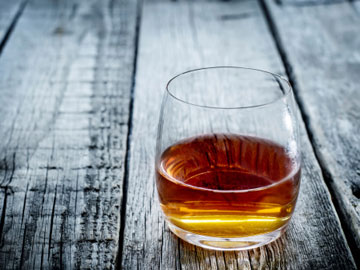
Looking for an unusual investment to diversify your portfolio? How about alcohol? No, we’re not suggesting you stockpile hooch. But, much like wine, rare single-malt Scotch whisky can fetch intoxicating prices.
Drink in these figures:
- In 2012, a bottle of Black Bowmore First edition from 1993, which originally cost £65 a bottle, changed hands for £2,800 in Glasgow.
- The most expensive whisky ever sold at auction, a bottle of The Macallan 64-year-old scotch, went for US $460,000 at a Sotheby’s auction in New York in November 2010.
- The highest-priced bottle currently listed on the World Whisky Index, a Netherlands based online trader, is selling for €65,000.
“People all over the world are asking for the luxury rare malts…not for drinking, but for investment,” says Michel Kappen, founder of the whisky index.
“As a specialist market that’s much smaller than fine wine or other commodities, it appears to be strong when other sectors are struggling,” says Jonny McCormick, a U.K.-based journalist for the Whisky Advocate.
And it’s not just that whisky tracks favourably with wine. In fact, certain collectibles have, in recent years, outperformed leading stock market indices. The Economist’s Valuables Index, which includes such sought-after collectibles as fine art, classic cars, and coins, has gained 211% in nominal terms since 2003. In comparison, the MSCI World, a global market index comprising some 1,600 top stocks, has increased by 147% in the same timeframe.
One factor that’s driving up prices is demand, particularly in emerging markets. Scotch whisky exports to Venezuela and India leapt 31% and 28%, respectively, in 2012.
“What we’re seeing in the last few years is that Chinese people are starting to buy whisky from great names like Macallan and Ardbeg—the hot stuff,” says Kappen. “And they pay much more for a bottle than Europeans or Americans.”
Ironically, the biggest risk with whiskey as an investment is liquidity. “Investors may experience problems selling their stocks in the future,” say Kappen
But McCormick points out that strong brands can lower risk. “There’s more Macallan sold for higher prices than any other brand,” he says, adding that supplies from closed distilleries such as Port Ellen and Brora also do well. In other words, those $100–$200 vintages at your local retailer might be worth saving for a special occasion, but not as a long-term investment.
Macallan, explains McCormick, limits the availability of its high-value collectibles due to a good understanding of the luxury market. “They’ve reaped the benefits of having an impressive stock of older whiskies and have cultivated markets successfully across the world, including Asia.”
Compared to wine, investing in whisky is less risky, adds Kappen. “Tere is a period [after which] the wine will lose its quality. With whisky, that’s not possible. You could keep it for centuries and the whisky will stay the same.”
Whiskey’s also much easier to store. With wine, the wrong temperature can make the bottle go bad. With whisky, just sit it upright in a cool place.
Selling will shave off some profit, with auctioneer-house fees ranging from 10 to 25%. Investors will also have to factor in capital gains tax to ensure a sale doesn’t actually result in a loss on the transaction.
